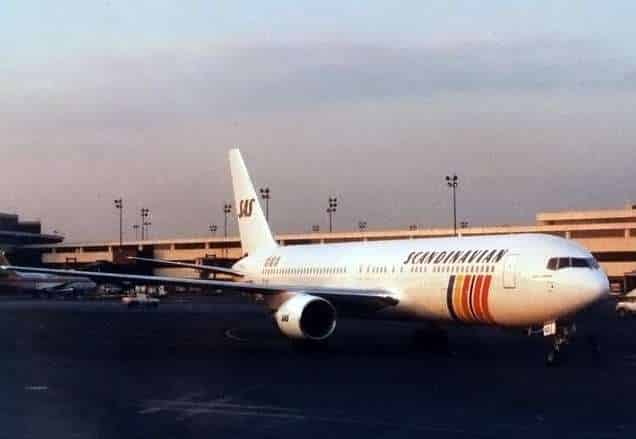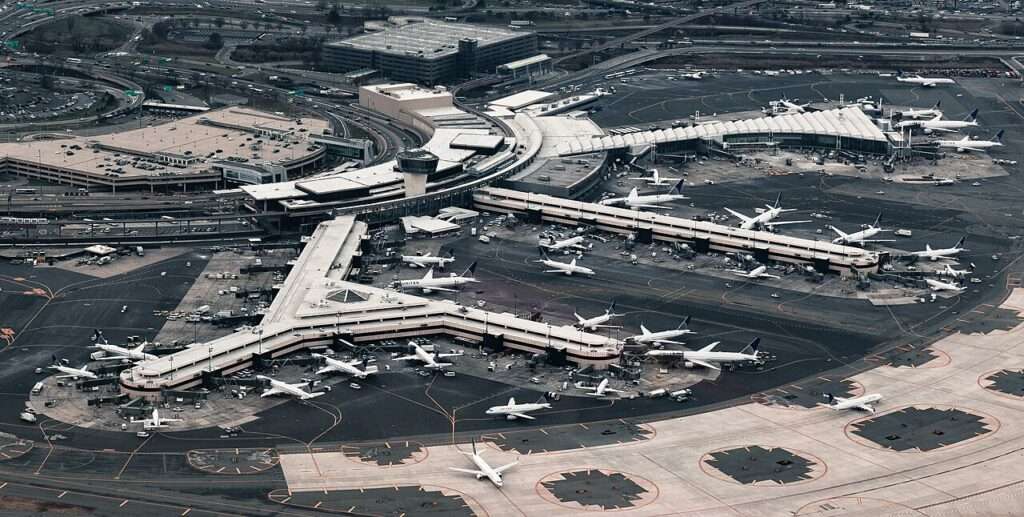Newark Liberty International Airport (EWR), a cornerstone of the New Jersey air travel network, boasts a rich history intertwined with the evolution of commercial aviation.
Its journey began on reclaimed marshland, transforming from the nation’s first major airport to a key player in the global travel scene.
Let’s explore the fascinating story of EWR, from its muddy beginnings to its current status as a bustling international gateway.
Taking Off: A Pioneering Spirit (1928-1940s)
The story of EWR unfolds in 1928. The City of Newark, recognizing the potential of air travel, embarked on an ambitious project to construct the nation’s first major airport.
Rising from 68 acres of dredged New Jersey marshland, Newark Metropolitan Airport, as it was then called, opened its doors on October 1st.
Boasting a single paved runway, it was a revolutionary concept – a dedicated space for commercial air travel.
Early success was swift.

Transcontinental Air Transport (TAT), a forerunner of TWA, began offering passenger service, and by 1930, EWR had become the busiest airport in the world.
The iconic Art Deco Administration Building, constructed in 1935, became the first commercial airline terminal in North America, a testament to the airport’s pioneering spirit.
However, EWR’s reign as the world’s busiest airport was short-lived.
The opening of LaGuardia Airport in New York City in 1939 divided the air traffic, leading to a decline in passenger numbers at EWR.
The onset of World War II further impacted EWR.
The U.S. Army Air Corps took over the facility in 1942, utilizing it for logistics operations and suspending commercial flights.
Post-War Growth and Redefining Identity (1940s-1970s)
Following the war, the Port Authority of New York and New Jersey acquired EWR in 1948.
Recognizing its potential, they embarked on a modernization program.
An instrument runway, a control tower, and a terminal building were constructed, laying the groundwork for EWR’s future growth.
Furthermore, the 1950s and 1960s witnessed a renewed focus on commercial aviation.
Airlines like Eastern, Pan Am, and United Airlines established hubs at EWR, connecting it to domestic and international destinations.
The airport underwent significant expansion, with a new terminal building opening in 1973.
However, EWR also faced challenges during this period.
Congestion issues and a lack of amenities began to tarnish the airport’s image. Recognizing this, a period of significant transformation began in the late 1960s.
A New Era: Liberty, Expansion, and Modernization at Newark International Airport (1970s-Present)

The 1970s marked a turning point for EWR.
The airport underwent a major expansion, with plans for three new terminals taking shape.
These terminals, designed to improve passenger flow and provide a more modern experience, gradually opened throughout the decade.
In 1973, the Port Authority renamed the airport Newark International Airport to reflect its growing international presence.
This name change further solidified EWR’s position as a major gateway to the world.
However, tragedy struck in 2001.
United Airlines Flight 93, one of the four planes hijacked on September 11th, crashed in a nearby Pennsylvania field after passengers and crew heroically fought back against the hijackers.
Furthermore, in 2002, to honor the victims and pay tribute to the Statue of Liberty, a symbol of freedom standing seven miles east of the airport, EWR was renamed Newark Liberty International Airport.

Since then, EWR has continued to modernize and expand.
Furthermore, new terminals, concourses, and parking facilities have been constructed to accommodate the ever-increasing passenger traffic.
The airport has also embraced technological advancements, implementing self-service kiosks, automated baggage handling systems, and mobile apps to enhance the passenger experience.
Today, Newark Liberty International Airport stands as a vital transportation hub in the New York metropolitan area.
While its history reflects challenges and triumphs, EWR remains committed to providing efficient and convenient travel for millions of passengers, serving as a key link connecting the region to the world.

Click the banner to subscribe to our weekly newsleter.

Click the photo to join our WhatsApp channel so then you can stay up to date with everything going on in the aviation industry!









